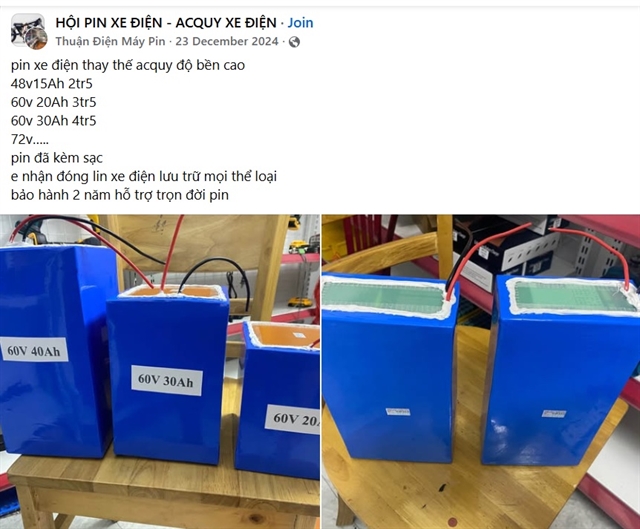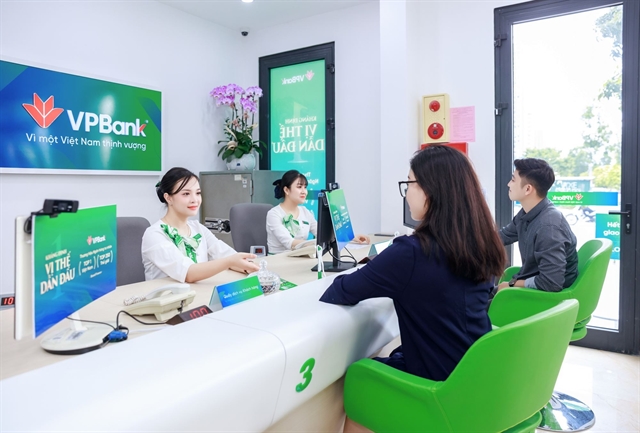 Economy
Economy


|
| The Solar Power Plant TTC Phong Điền in the central province of Thừa Thiên Huế. The awareness of banks on green credit has been significantly improved. Photo baothuathienhue.vn |
HÀ NỘI Green credit is a trend in the global banking and finance industry and more Vietnamese banks are following suit.
The State Bank of Việt Nam (SBV)’s latest survey of credit institutions (CIs) in the field of green growth and green credit released recently showed that the awareness of CIs on green credit has improved significantly.
Specifically, 19 CIs have developed strategies for environmental and social risk management while 13 CIs have integrated the content of environmental and social risk management in the process of green credit assessment.
Ten CIs have built credit products and banking services for green sectors and have shown an interest in providing credit for these sectors, mainly in the medium and long term with preferential interest rates for green projects.
However, the SBV’s statistics also showed that funding for green projects remained restricted, with only 24 per cent of green projects developed by the banks for credit appraisal process.
According to industry insiders, bank loans to green projects are expected to be promoted in the future with the participation of international capital sources.
TPBank has recently signed a long-term contract for green credit loans worth US$20 million within three years from the Global Climate Partnership Fund (GCPF). The signing of the deal with GCPF will open more opportunities to access capital with attractive interest rates for projects, production and business plans with energy saving factors, carbon dioxide reduction and environmental protection.
Bùi Quang Duy, GCPF’s Asia-Pacific investment expert, said TPBank was its second bank partner in Việt Nam. The fund highly appreciated the potential of the Vietnamese market, expressed by the fact that TPBank immediately signed a number of loans that exceeded the expected plan.
“Viet Nam has many favourable factors in terms of macro economy, awareness of people and partners. GCPF determined that this was a big market for long-term development with increasing values,” Duy told Đầu tư chứng khoán (Securities Investment) newspaper.
GCPF also signed a co-operation on implementing the ‘Green Credit’ programme with Nam A Bank to finance businesses and individuals. This is considered the first step of the bank in the community project ‘I choose to live green’.
Large capital from the deals between partners or banks and firms with green projects are increasing. For example, Agribank and Vietnam Development Bank (VDB) signed a co-financing agreement for the Solar Power Plant TTC Phong Điền in the central province of Thừa Thiên Huế with the investor’s counterpart capital of 40 per cent and loans from banks of 60 per cent.
Agribank and Central Power Corporation (EVNCPC) signed a credit contract to invest in the construction of the Central Power Solar Project in the south-central province of Khánh Hòa. Total construction investment capital is VNĐ1.372 trillion, of which VNĐ735 billion were loans from Agribank.
According to Nguyễn Hưng, TPBank’s general director, lending to green projects was not only less risky than conventional credit loans, but also brought more benefits for the objectives of sustainable, long-term development and environmental protection. Of course, when lending, banks still had to choose loans and customers to ensure compliance with conditions and standards to meet green credit.
Not only taking into account efficiency of each borrower, banks now also comply with environmental and social factors aimed at gaining sustainable development and meeting the common interests of the community, Hưng said.
According to Hà Thu Giang, deputy director of the SBV’s Credit Department, the SBV targets to have all banks build internal regulations on environmental and social risk management in credit granting activities by 2025.
Besides applying environmental standards for projects funded by banks, by 2025, all banks will also have to assess social and environmental risks in their credit granting activities, and combine environmental risk assessment as part of their credit risk assessment.
By 2025, the SBV also plans to have at least 10-12 banks establish specialised units or departments for environmental and social risk management while 60 per cent of banks have access to green capital and provide loans for green credit projects.
SBV encourages credit institutions to develop green banking strategies independently or integrated into annual business development strategies and plans. It also gives support to banks to develop specific policies for sensitive environmental areas, Giang said. VNS




